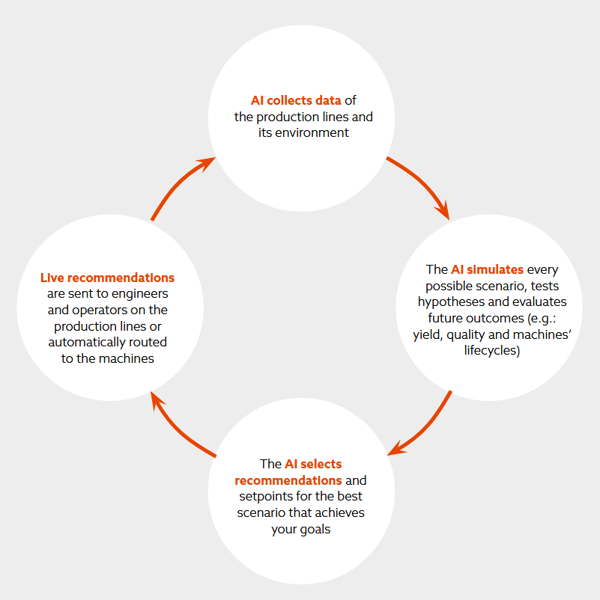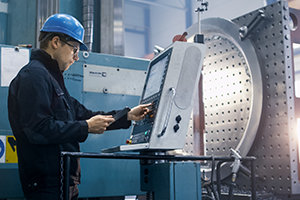Machine learning, the fundamental driver of AI, is possible through algorithms that can learn themselves from data and identify patterns to make predictions and achieve your predefined goals, rather than blindly following detailed programmed instructions, like in traditional computer programming. This technology allows the machine to perceive, learn, reason and communicate through observation of data, like a child that grows up and acquires knowledge from examples. Machines also have the advantage of not being limited by our inherent biological limitations. With machine learning, manufacturing companies have increased production capacity up to 20%, while lowering material consumption rates by 4%.
Nowadays, the revolutionary AI technology evolved from rule-based expert systems to machine learning and more advanced subcomponents such as deep learning (learning representations instead of tasks), artificial neural networks (inspired by animal brains) and reinforcement learning (virtual agents rewarded if they made good decisions).
Dealing with countless variables and dimensions in a heartbeat
Machine learning is immensely powerful in the context of production line and process optimization, where humans have already tried every traditional technique to extract more performance improvements: it can detect patterns hidden in years of data that humans could have missed and make sense of a vast number of variables - where adults can usually only process four or five at the same time.
A transversal view to enhance the whole factory
With the full picture in mind, the AI can master the complexity of the intertwining industrial processes to enhance the whole flow of production instead of isolated processes. This enormous cognitive capacity gives the AI the ability to consider the spatial organization of plants and the timing constraints of live production. Another key advantage is the capability of AI algorithms to think probabilistically, with all the subtlety this allows in edge cases, instead of traditional rule-based methods that require rigid theories and a full comprehension of problems.

Real-time, prescriptive analytics: the power to see the optimal future
AI is upgrading the traditional operating methods, assisting operators in their decision process, even going as far as doing research itself. In practice, AI assistants started with reports that explain what happened, developed into interactive dashboards that detail why problem did occur, and evolved to predictive model that forecast what will happen. State-of-the-art AI pushes back the limits of insights with prescriptive analytics that determine the best outcome and give recommendations on what to do to avoid a problem or achieve a goal, with the possibility of automating tasks. With machine learning, the models learn continuously, which enables novel improvement opportunities in second instead of months, or years.
A constant feedback loop to improve efficiency
With the optimal configuration determined by AI, data analytics and process control can be combined, creating a virtuous circle: the AI perceives the live production with its sensors, simulates the different possible outcomes, determines the best settings to achieve the best outcome, routes its decisions to the set points of programmable logic controllers (PLCs), and monitors how the production lines evolves, before beginning the cycle again.
Empowering every human to innovate
With this previously unimaginable tool in hand, no doubt that companies are better equipped than ever to face the challenges of our times. In the manufacturing world, AI can greatly help solve production issues such as instability of the production lines, process complexity, suboptimal yields, lack of skilled workforce, safety, recycling, environmental and regulatory requirements. In a wider perspective, as Microsoft CEO Satya Nadella remarked, "we are not pursuing AI to beat humans at games. We are pursuing AI so that we can empower every person and every institution that people build with tools of AI, so that they can go on to solve the most pressing problems of our society and our economy.”


